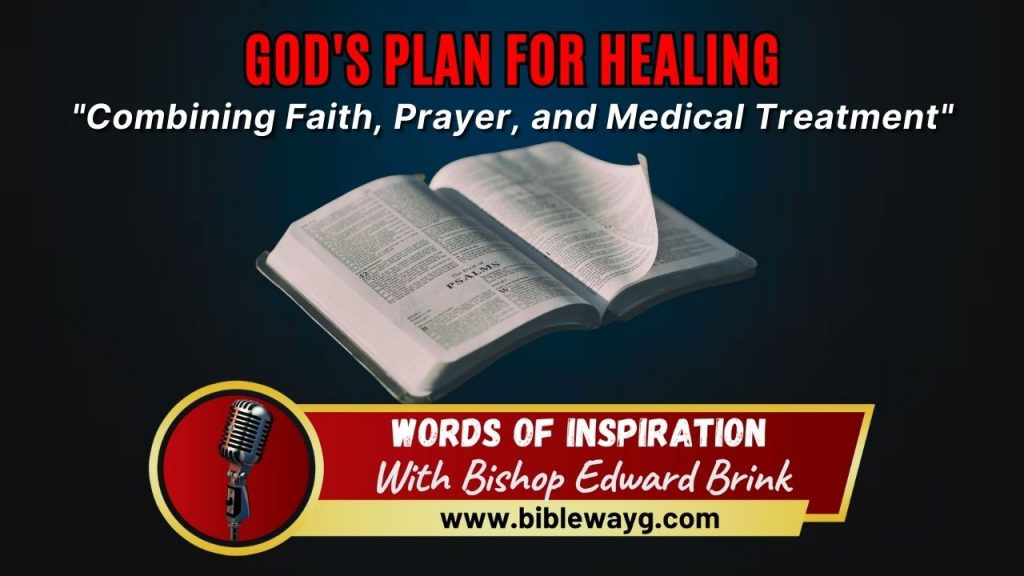Walking in the Miraculous | Miracles performed by Jesus Christ
Walking in the Miraculous by Bishop Edward Brink
The miracles performed by Jesus Christ serve as powerful demonstrations of His divinity and authority. They reveal His compassion for the suffering and His ability to overcome the impossible. In this Bible lesson, we will explore some of the remarkable miracles performed by Jesus, seeking to understand their significance and learn how we can walk in the Miraculous in our own lives.
Walking in the Miraculous: “Miracles performed by Jesus Christ.”
I. The Miraculous Power of Healing
– Bible Verse: Matthew 4:23
“And Jesus went about all Galilee, teaching in their synagogues, preaching the gospel of the kingdom, and healing all kinds of sickness and all kinds of disease among the people.”
In this miraculous act, Jesus demonstrated His authority over sickness and disease. He moved from place to place, healing all kinds of ailments and infirmities among the people. His healing touch brought physical restoration and renewed hope to those who were suffering.
A. Jesus Healing the sick
– Bible Verse: Matthew 9:35
“Then Jesus went about all the cities and villages, teaching in their synagogues, preaching the gospel of the kingdom, and healing every sickness and every disease among the people.”
In this miraculous act, Jesus demonstrated His authority over sickness and disease. He moved from place to place, healing all kinds of ailments and infirmities among the people. His healing touch brought physical restoration and renewed hope to those who were suffering.
B. Jesus Healing the paralyzed.
– Bible Verse: Matthew 9:2-7
“Then behold, they brought to Him a paralytic lying on a bed. When Jesus saw their faith, He said to the paralytic, ‘Son, be of good cheer; your sins are forgiven you.’… ‘Arise, take up your bed, and go to your house.’ And he arose and departed for his house.”
One of the remarkable miracles performed by Jesus was the healing of a paralytic man. When Jesus saw the faith of those who brought the paralyzed man to Him, He not only forgave the man’s sins but also commanded him to rise, take up his bed, and go home. Through this miracle, Jesus displayed His power to bring healing and restoration to the broken and disabled.
Walking in the Miraculous: “Miracles performed by Jesus Christ.”
II. The Miraculous Power over Nature.
– Bible Verse: Matthew 8:26-27
“But He said to them, ‘Why are you fearful, O you of little faith?’ Then He arose and rebuked the winds and the sea, and there was a great calm. So the men marveled, saying, ‘Who can this be, that even the winds and the sea obey Him?'”
A. Jesus Calming the storm.
– Bible Verse: Mark 4:39
“Then He arose and rebuked the wind, and said to the sea, ‘Peace, be still!’ And the wind ceased and there was a great calm.”
During a tempestuous boat ride with His disciples, Jesus displayed His authority over nature by rebuking the wind and the sea. With a commanding voice, He brought about a great calm, leaving His disciples in awe of His power and causing them to marvel at the One who could control the elements themselves.
B. Jesus Multiplying the loaves and fish.
– Bible Verse: Matthew 14:19-21
“Then He commanded the multitudes to sit down on the grass. And He took the five loaves and the two fish, and looking up to heaven, He blessed and broke and gave the loaves to the disciples; and the disciples gave to the multitudes. So they all ate and were filled, and they took up twelve baskets full of the fragments that remained.”
In this extraordinary miracle, Jesus took a meager offering of five loaves of bread and two fish and multiplied them to feed a multitude of people. With gratitude and a blessing, He distributed the food to the hungry crowd, and not only were they all fed, but there were also leftovers. This miracle showcased Jesus’ ability to provide abundantly from scarce resources and revealed His divine provision.

Walking in the Miraculous: “Miracles performed by Jesus Christ.”
III. The Miraculous Power over Death
– Bible Verse: John 11:43-44
“Now when He had said these things, He cried with a loud voice, ‘Lazarus, come forth!’ And he who had died came out bound hand and foot with graveclothes, and his face was wrapped with a cloth. Jesus said to them, ‘Loose him, and let him go.'”
A. Jesus Raising Lazarus from the dead.
– Bible Verse: John 11:41-42
“Then they took away the stone from the place where the dead man was lying. And Jesus lifted up His eyes and said, ‘Father, I thank You that You have heard Me. And I know that You always hear Me, but because of the people who are standing by I said this, that they may believe that You sent Me.'”
Perhaps one of the most awe-inspiring miracles performed by Jesus was the resurrection of Lazarus. Despite being in the tomb for four days, Jesus called Lazarus forth with a loud voice,
and Lazarus emerged, still wrapped in graveclothes. This miracle not only displayed Jesus’ authority over death but also foreshadowed His own impending resurrection and offered a glimpse of the eternal life He offers to all who believe.
B. Jesus Resurrecting the widow’s son.
– Bible Verse: Luke 7:14-15
“Then He came and touched the open coffin, and those who carried him stood still. And He said, ‘Young man, I say to you, arise.’ So he who was dead sat up and began to speak. And He presented him to his mother.”
When Jesus encountered a funeral procession for a widow’s only son, He was moved with compassion. He approached the open coffin, touched it, and commanded the young man to arise. Instantly, the dead man sat up and began to speak. This miraculous event not only brought great joy to the grieving mother but also testified to Jesus’ power over death and His ability to restore life.
Walking in the Miraculous: “Miracles performed by Jesus Christ.”
The miracles performed by Jesus Christ were not mere displays of power, but rather acts of love, compassion, and divine authority. They showcased His identity as the Son of God and brought hope and healing to countless individuals. As believers, we can draw inspiration from these miracles and strive to walk in the miraculous in our own lives.
By placing our faith in Jesus, we can experience His transformative power, witnessing healing, restoration, and victory over seemingly impossible circumstances. Let us, therefore, embrace the miracles of Jesus Christ and confidently step into a life marked by the miraculous. Walking in the Miraculous: “Miracles performed by Jesus Christ.”

Please write appropriate comments below related to this Blog Post.






